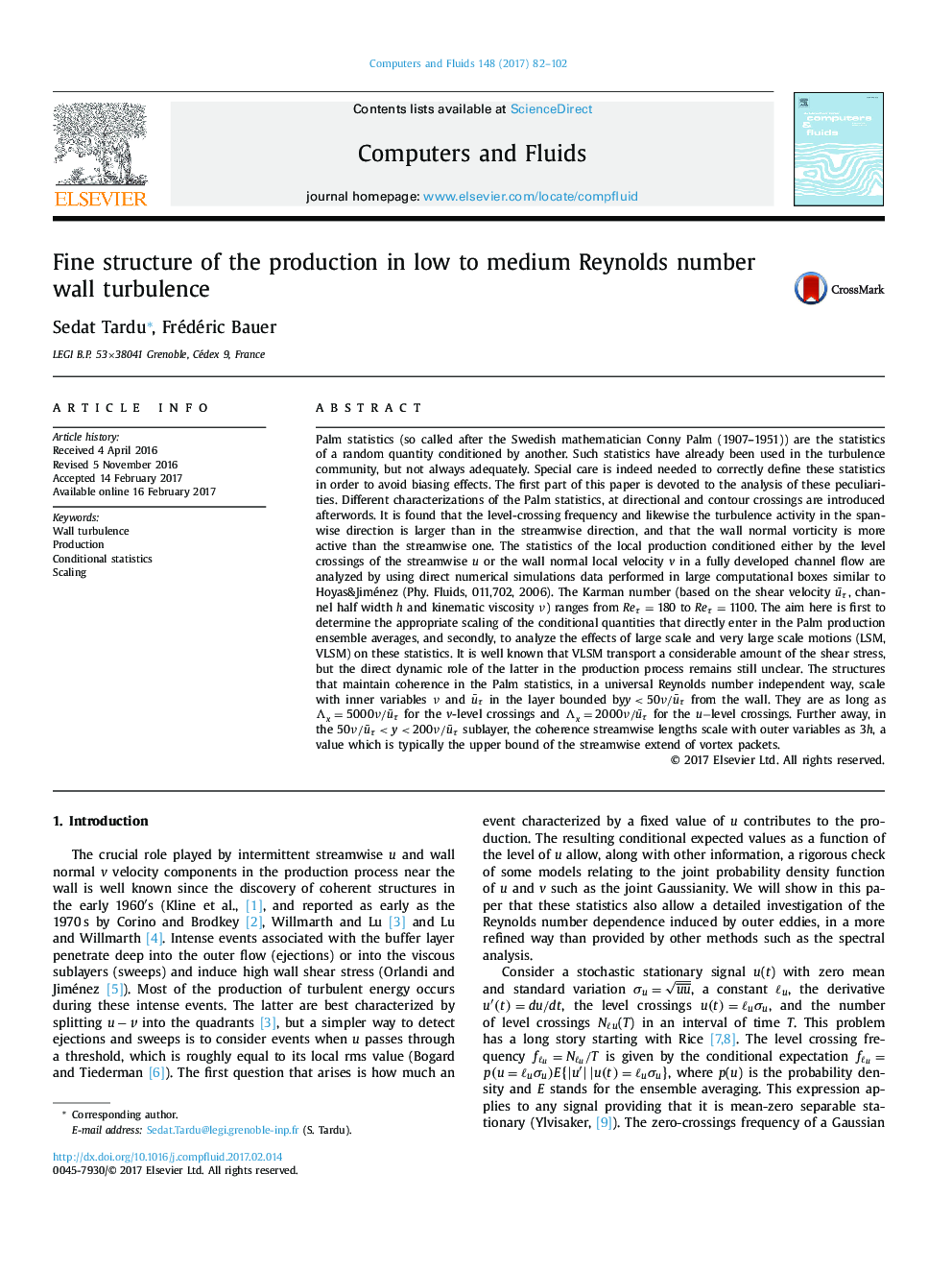| Article ID | Journal | Published Year | Pages | File Type |
|---|---|---|---|---|
| 5011931 | Computers & Fluids | 2017 | 21 Pages |
Abstract
Palm statistics (so called after the Swedish mathematician Conny Palm (1907-1951)) are the statistics of a random quantity conditioned by another. Such statistics have already been used in the turbulence community, but not always adequately. Special care is indeed needed to correctly define these statistics in order to avoid biasing effects. The first part of this paper is devoted to the analysis of these peculiarities. Different characterizations of the Palm statistics, at directional and contour crossings are introduced afterwords. It is found that the level-crossing frequency and likewise the turbulence activity in the spanwise direction is larger than in the streamwise direction, and that the wall normal vorticity is more active than the streamwise one. The statistics of the local production conditioned either by the level crossings of the streamwise u or the wall normal local velocity v in a fully developed channel flow are analyzed by using direct numerical simulations data performed in large computational boxes similar to Hoyas&Jiménez (Phy. Fluids, 011,702, 2006). The Karman number (based on the shear velocity u¯Ï, channel half width h and kinematic viscosity ν) ranges from ReÏ=180 to ReÏ=1100. The aim here is first to determine the appropriate scaling of the conditional quantities that directly enter in the Palm production ensemble averages, and secondly, to analyze the effects of large scale and very large scale motions (LSM, VLSM) on these statistics. It is well known that VLSM transport a considerable amount of the shear stress, but the direct dynamic role of the latter in the production process remains still unclear. The structures that maintain coherence in the Palm statistics, in a universal Reynolds number independent way, scale with inner variables ν and uÂ¯Ï in the layer bounded byy<50ν/uÂ¯Ï from the wall. They are as long as Îx=5000ν/uÂ¯Ï for the v-level crossings and Îx=2000ν/uÂ¯Ï for the uâlevel crossings. Further away, in the 50ν/u¯Ï
Related Topics
Physical Sciences and Engineering
Engineering
Computational Mechanics
Authors
Sedat Tardu, Frédéric Bauer,
